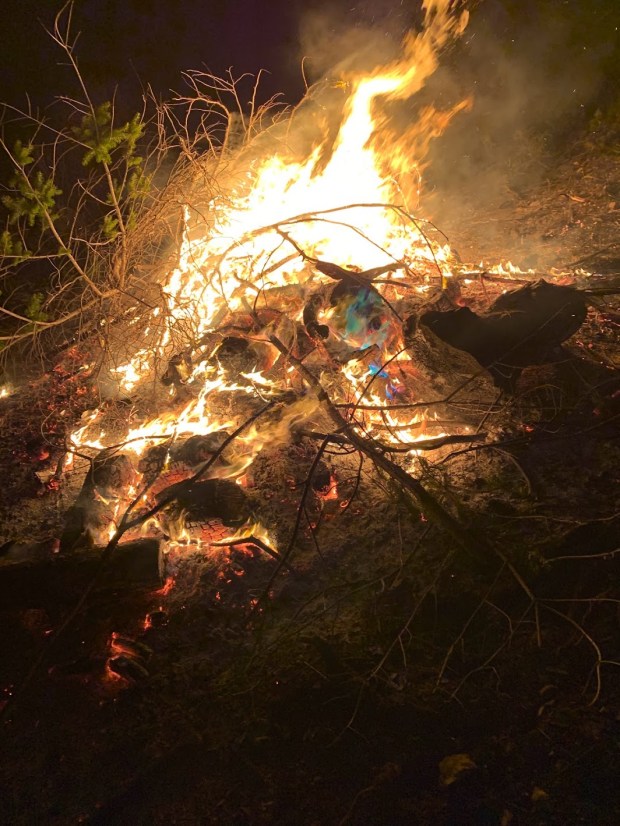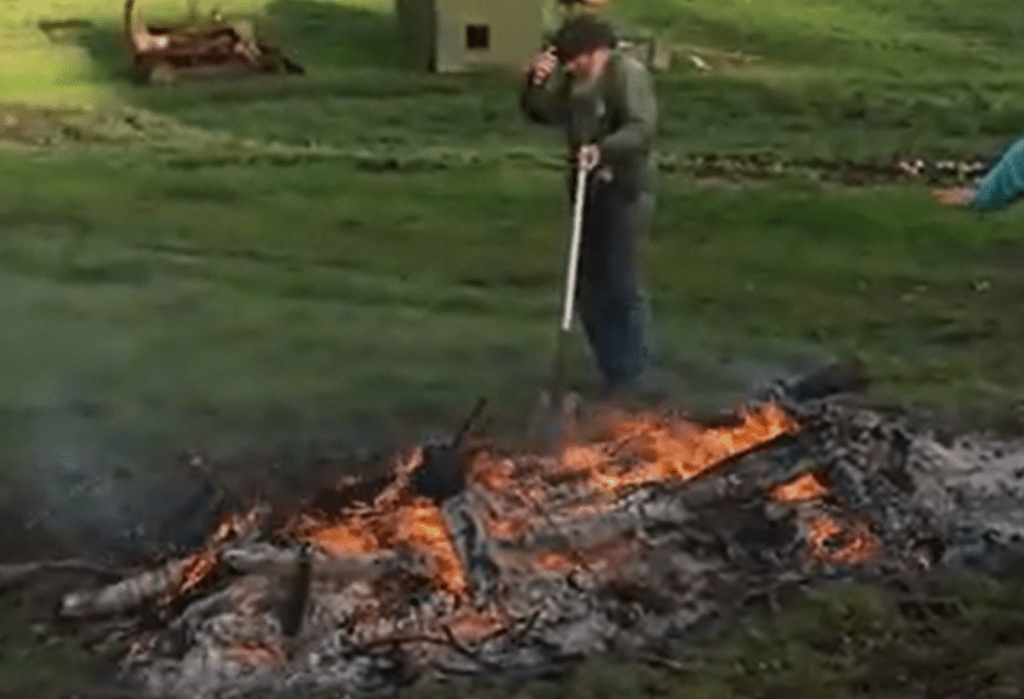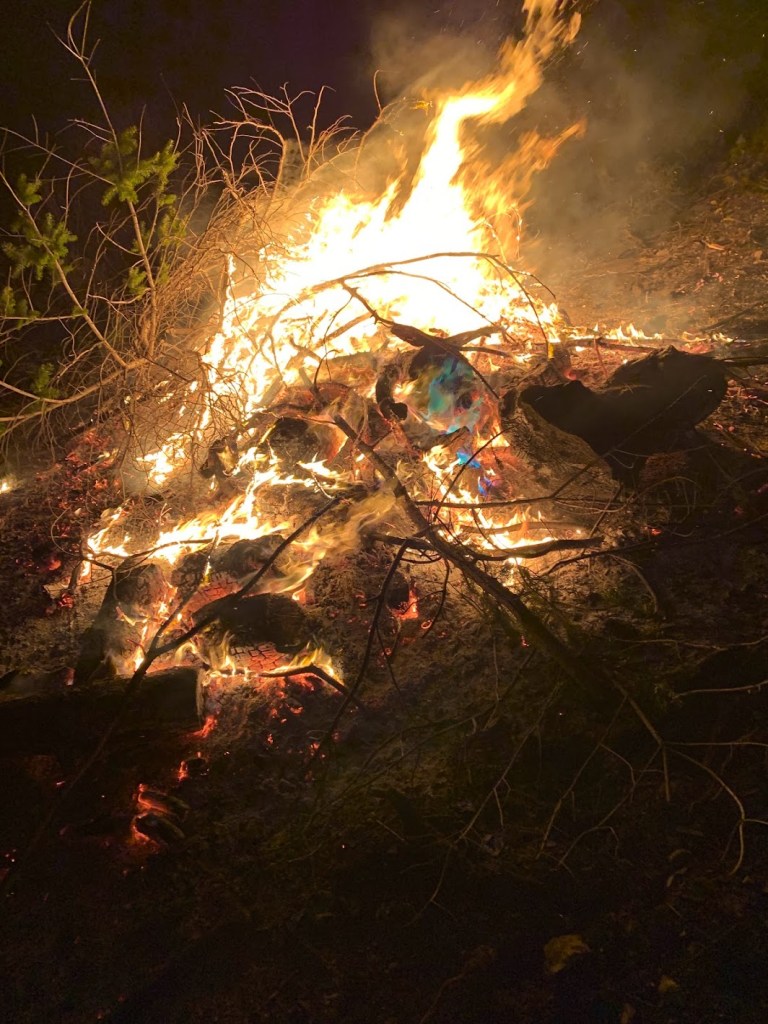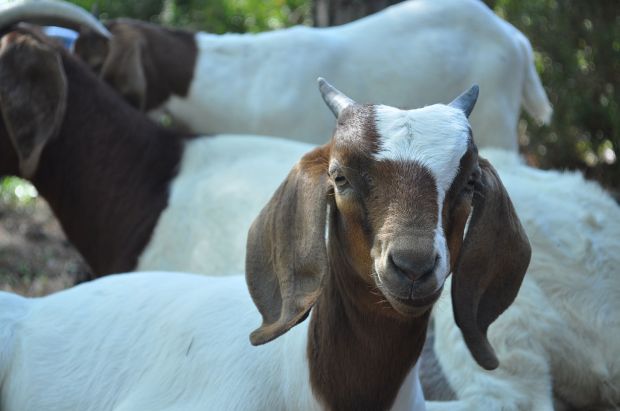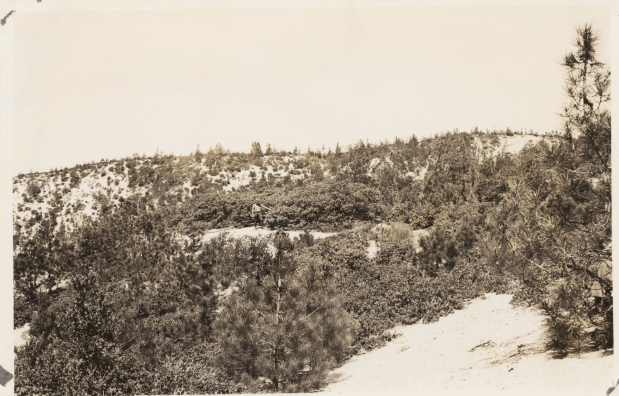With the rain and cool weather, for many reasons….it is fire time. How do we weigh the balance between the benefits of burning wood for heat and wildland fuel reduction with the drawbacks of indoor and outdoor air pollution and atmospheric carbon additions/global warming? This moment in this season is a good time to enter that reflective space.
Thinking Ahead
February is historically the wettest time of year on California’s central coast. The most rain falls in February, and the days are still short and the air is cool, keeping the environment moist between rainstorms. In just a handful of months, it will be dry and hot and fire weather will return. Anyone with responsibility to manage any vegetation must regularly plan for fire. Fire storms now march right into towns and so the smallest yard keepers have to think about the flammability of their situation. Why wait until the fiery weather is upon us? Cool days make for excellent outdoor working weather, and the wet environment opens up all sorts of opportunities for biomass processing.
Our Cultural Controls on Pile Burning
The native peoples burned dry natural vegetation, and so must we. With the rains and surrounding vegetation so moist, it has been an excellent time to do ‘pile burning.’ The CZU CAL FIRE unit, which oversees Santa Cruz and San Mateo County, started allowing rural residents to burn dry piles of vegetation starting last November 11, but how long that permission will last depends on the weather. CAL FIRE says, “Dry, natural vegetation, grown on the property may be burned outdoors in open piles unless prohibited by local ordinances.” But first you have to apply for a CAL FIRE permit using an online system; and then you can only burn on a day that the Air Resources Board says is okay – when the smoke won’t be too much of a health hazard. You’ll need to do another permit application from them using, again, an online system. Interestingly, while CAL FIRE allowed burns a few weeks earlier, the Air Board burn season is December 1 – April 30.
Burning Assistance
This past December, and maybe again in the future, the Central Coast Prescribed Burn Association hosted workshops teaching “the foundational concepts of safe pile burning.” They offer this online resource for more guidance.
What About Composting Woody Debris for Fire Safety?
There is an understandable uprising against burning given concerns about climate change. Many people are suggesting composting biomass instead of burning it.
If you are in town, you can meter out your green waste bins by pruning out any dead or overgrown plants, a little at a time …. week by week. If you live out in the countryside and have to deal with a lot of woody biomass, you haul it to the dump or think of other solutions. How the dump manages to dispose of that much composted biomass is a conundrum.
There are permaculture folks and other Hügelkultur practitioners who suggest burying woody material beneath agricultural or horticultural beds, taking advantage of rotting wood for soil carbon benefits including increased water retention. This is a lot of work so it is applicable for only small amounts of woody debris in specific situations. Others suggest burying biomass to reduce erosion in downcutting drainages. My limited experience suggests caution with this approach as any wood that appears out of the soil will probably ignite during wildfire, burning and cooking the soil in the drainage. I share the same experience and caution for Hügelkultur: bury it well and hope it rots fast (you’ll need to keep it moist)!
What About Chipping?
With diesel or gas-guzzling chipping machines, it is questionable whether chipping is any better than burning biomass for atmospheric carbon impacts. There is also a concern about the wood chips catching fire in wildfires. One person I know had a nice pile of chips slowly disappearing into their grassy yard soil until someone built a warming fire on top of them…which ignited a few days later into a large conflagration that was difficult to extinguish. Best to bury chips, too – but not so easy to do! The same cautions apply for the practice of mastication- those big machines that chip vegetation ‘in place.’ Masticated material lying in carpets across the ground are less dangerous, but they still carry wildfire. And so, let’s turn back to the burning option.
Burning in Santa Cruz
The CZU Lightning Complex Fire burned 85,000 acres….mostly incompletely. That’s the region’s biggest, most obvious UH-OH! If you look at most of that acreage, you will see thousands and thousands of dead trees, which are slowly falling and creating a giant fire hazard. Do you recall the Creek Fire pyrocumulonimbus cloud and extreme fire behavior, including tornadoes of flames? That fire and other fires in the Sierra Nevada were greatly exacerbated by large numbers of trees killed by drought and beetles. We are facing the same danger in the footprint of the CZU Lightning Complex Fire. State Parks and other landowners have been using pile burning to reduce fuels to mitigate such a catastrophe, but a lot more needs to happen: the ‘treated landscape’ is much smaller than the untreated areas at this time. Still, I know of more than 500 burn piles having been ignited this season, so there is hope.
Another method of burning involves using an ‘air curtain burner’ or a ‘carbonator.’ These both look like large metal shipping containers. Air curtain burners use high powered fans to contain sparks while logs get incinerated. Carbonators use more controlled air exchange so that they create ‘biochar’ – charcoal that can be used in agriculture or horticulture. Vineyards have been experimenting with biochar as a soil amendment that holds some promise for increased soil water retention. Horticulturally, biochar may substitute for carbon- and nature-unfriendly (mined) peat moss. We need to study biochar to see how long it retains carbon in the soil – long- or short term – to understand its potential for helping global warming by sequestering carbon.
Burning Wood: Carbon Neutral?
There is a movement afoot to reduce the use of wood for fuel, but to what end? In the San Lorenzo Valley and elsewhere, folks have long complained about air quality degradation due to badly managed wood heating apparatus. Unfortunately, folks use old wood fueled heaters and/or burn poor quality wood. As with burn piles, folks should be careful to burn only dry wood: there ought to be some rules for firewood sales to disclose percent moisture content in fire wood. Also, firewood needs to be stored so it doesn’t get wet after it is delivered to someone’s home. Wet firewood smokes a lot. Dry firewood burned in a modern woodstove, using smart fire building and maintenance methods can greatly reduce pollution while using a sustainable fuel source. The California Air Resources Board has a great website on cautions about, and helpful tips for, using wood for heating, and as an alternative suggests using electrical heaters.
Two thirds of California’s electricity comes from natural gas – fossil fuel! That figure is more hopeful in our region if you choose to get your power from Central Coast Community Energy, which is shooting for 60% renewable by 2025. Heating with wood is considered by many to be carbon neutral because the carbon that cycles from the atmosphere into plants, and then into wood fuel, isn’t fossil carbon but natural-cycling carbon. Plus, harvesting that woody carbon has the potential around here of being part of the solution to our current, catastrophic wildland fire fuel problem.
I hope you will carefully consider the right way to use wood for heat and take some time to manage fuels and vegetation where you can.
-this article originally posted by Bruce Bratton at his BrattonOnline.com weekly blog- get it automatically by subscription at his website…support local journalism and donate to Bruce- he could use your help!
